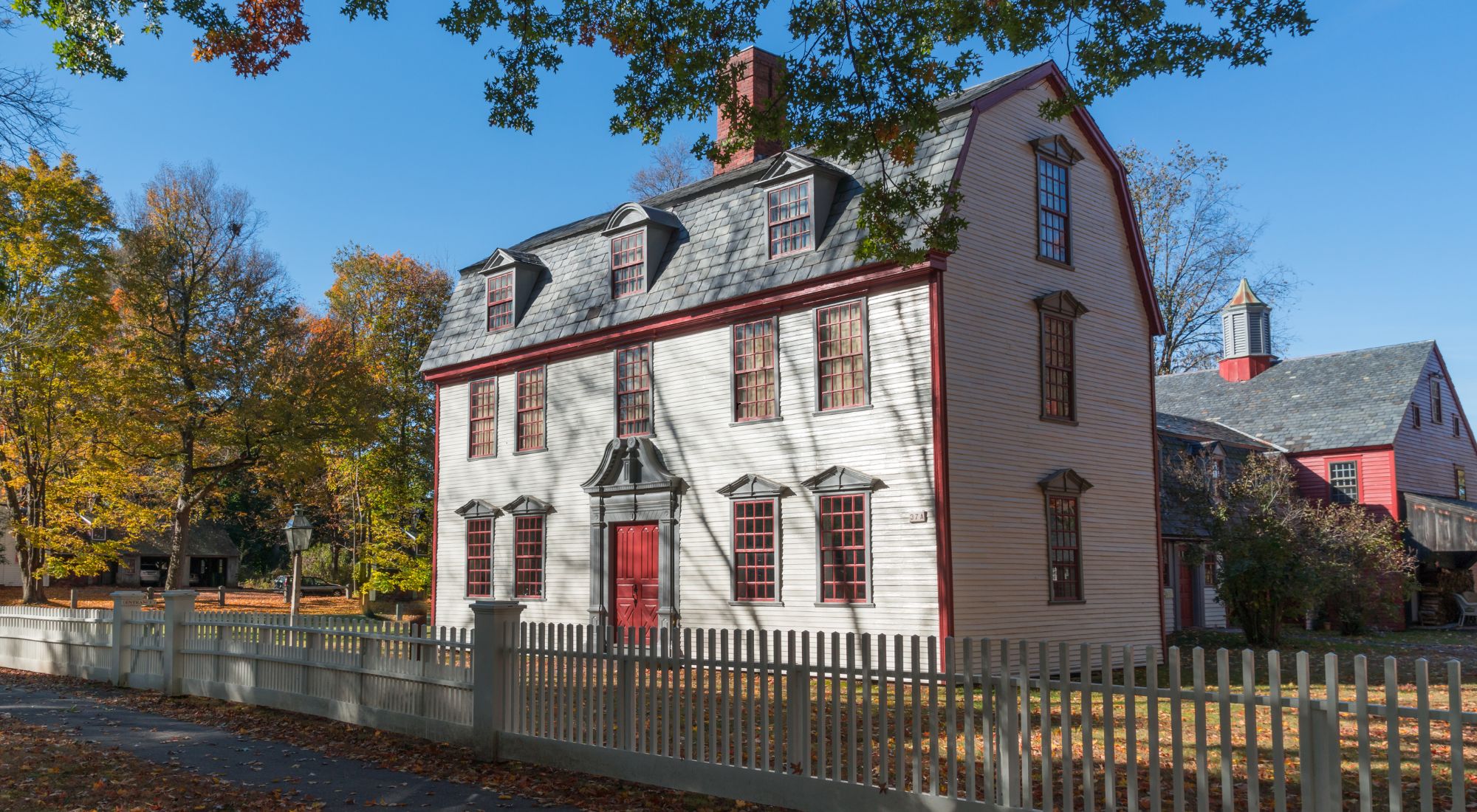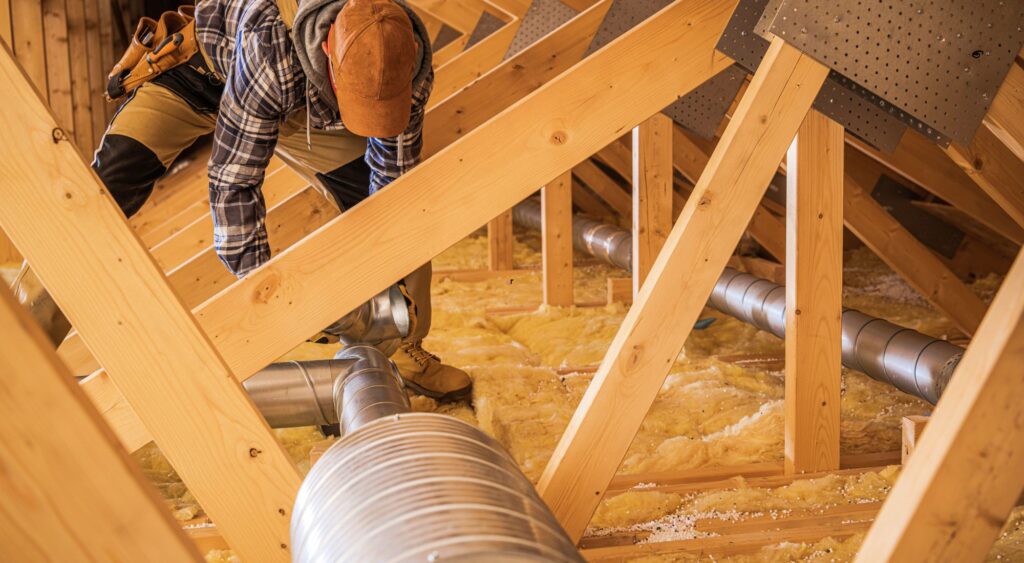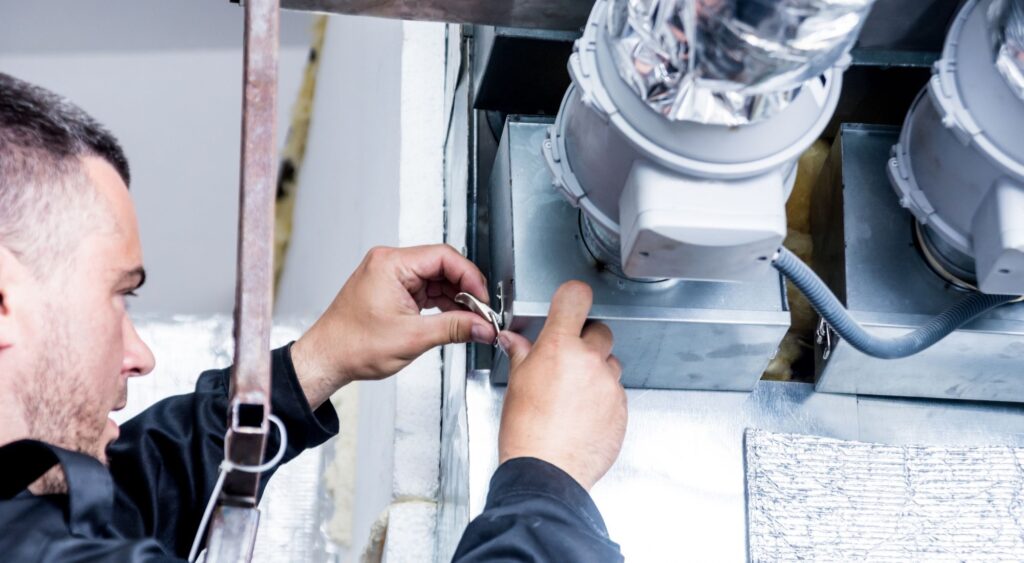
You love everything about your historic home — well, almost everything.
From its classical profile to its intricate interior woodwork, your old home moves your heart, if only it could move the indoor air around just as well.
The love you have for your home is fair weather. You don’t think you can stand another freezing winter or sweltering summer, but you’ve heard horror stories of old homes being gutted to retrofit the HVAC system.
So what are the HVAC options for old houses?
You don’t have to sacrifice your comfort to preserve the historical integrity of your home. Let’s discuss the details of retrofitting your HVAC system and explore heating and air conditioning options for older homes.
Table of Contents
- Can I Retrofit My Historic Home With an HVAC System?
- The Importance of Retrofitting HVAC Systems
- 2 Common HVAC Challenges for Old Homes
- What Is the Best Heating System for an Old House?
- 4 Heating and Cooling Solutions for Historic Homes
- How Should You Prepare for a Historic Home HVAC Installation?
- Explore Your HVAC Options for Old Houses With the Help of AAA Heating and Cooling
Can I Retrofit My Historic Home With an HVAC System?
The short answer is yes, you can retrofit a historic home with an energy-efficient HVAC system!
You’ll find that many of Portland’s popular historic homes have retrofitted HVAC systems. While the installation of an HVAC system is possible, it will take an HVAC expert’s ingenuity and creativity to complete the complex project with minimal alterations to the home’s appearance.
AAA Heating and Cooling has been providing HVAC expertise for Portland’s homeowners for decades. As one of the oldest HVAC providers in the area, we have a great wealth of collected knowledge and experience with serving older homes. Explore your HVAC options for your old house with us today.
The Importance of Retrofitting HVAC Systems
Your home may be in need of an HVAC retrofit if you are experiencing one of the following:
- Your HVAC system is over 15-30 years old.
- Your energy bills are out of control.
- You are continually having your current system repaired.
- Your building has developed an indoor air quality problem.
- Your home’s current heating and cooling capacities make it uncomfortable.
Modernity has graced homeowners with superior heating and cooling solutions for maximum efficiency and energy savings, so why should homeowners of non-modern homes miss out?
Retrofitting your historic home’s HVAC system comes with many benefits including:
- Improved energy efficiency: By upgrading or retrofitting your home’s HVAC system, you can invest in newer models that enhance your energy efficiency and promote energy savings. A lot of the newer units you install may have a higher Seasonal Energy Efficiency Ratio (SEER) or Annual Fuel Utilization Efficiency (AFUE) ratings.
- Enhanced indoor air quality: An HVAC retrofit commonly includes the installation of advanced air filtration systems, ventilation units, and precise temperature control technology. These modern features may help your heating and cooling system remove pollutants, allergens, and microorganisms to improve your indoor air environment.
- Optimized comfort levels: Modern HVAC systems allow you to accurately and efficiently control the temperature, humidity, and air distribution. By retrofitting your HVAC system, you can provide your historic home with a heating and cooling solution that preserves its structure and increases its comfort.
- Increased property value: Energy-efficient homes are valued higher on the housing market. LEED-certified homes may sell at premiums of 8-10% and ENERGY STAR-certified homes tend to sell for 2-5% more than non-certified homes.
2 Common HVAC Challenges for Old Homes
There are a few challenges that may come with installing heating and air conditioning throughout a historic home.
One of the primary concerns when installing or upgrading HVAC systems for technicians is figuring out a way to preserve as much of the building’s original features, fixtures, and appearance. Other problems include the limited space for installation and limited or non-existent ductwork.
#1: Lack of or Non-Existent Ductwork
While duct heating and cooling systems are today’s modern standard, it wasn’t universally adopted for all home construction until the 60s and 70s. Before this, homes were generally heated with wood fireplaces and radiators, and home cooling options were often limited to open windows and fans.
For this reason, many historic homes have limited or non-existent ductwork and existing ductwork may not even be the right size. Some homeowners may suffer through uncomfortable indoor conditions because they are afraid that all HVAC options for old houses involve gutting their homes to install ductwork. However, there are plenty of HVAC options that do not involve adding ductwork or only involve installing a small amount.
Retrofitting your historic home may also involve taking steps to tighten the building’s envelope, such as the installation of high-efficiency window units to prevent energy losses.
Keep in mind that a new HVAC system may also change your home’s environment. You may need to monitor ambient conditions frequently to determine if the HVAC system creates conditions that promote the cracking of wood or finishes, metal corrosion, rot, paint blistering, or other problems.
#2: Limited Space
Oftentimes, older homes do not have the space to accommodate ductwork without lowering ceilings. This could potentially raise the costs of your new HVAC installation and require more invasive construction procedures. HVAC experts may also need to strip interior finishes or exterior cladding to install insulation and vapor barriers.
The location of registers, grilles, and other HVAC equipment requires thoughtful placement to preserve historic finishes and features. Your installation technicians will need to know how to work with limited space to successfully install a new HVAC system for your historic home.
Remember that you may need to follow municipality limitations regarding alterations if you wish to maintain the home’s historic status.
What Is the Best Heating System for an Old House?
The best HVAC option for old houses is one that:
- Fits your home’s infrastructure while preserving its integrity; and
- Meets your energy and installation budget.
You’ll also want the best in the business to handle the HVAC installation. AAA Heating and Cooling has been working with homeowners of houses new and old for over 50 years.
We are a family company dedicated to preserving the health, safety, and beauty of the historic homes and buildings of Portland. If you’re ready to update your HVAC system — but don’t know where to start — take the first step in your retrofitting journey by giving us a call today.
4 Heating and Cooling Solutions for Historic Homes
There are several different HVAC systems that could work for your older home. Having an idea of how each of these systems is built, what components they include, and how effective they are at conditioning certain spaces can all play a part in which solution you choose for your historic home.
#1: Mini-Split System
Mini-split systems are similar to furnace and air conditioner combinations in that they have indoor and outdoor units.
This type of system, however, doesn’t require as much ductwork, so you can condition the air in rooms that can’t accommodate ductwork. Installing mini-split systems is simpler than traditional systems, is minimally invasive, and allows for targeted zoning, so you can control the conditions in different areas of the home.
#2: High-Velocity System
A high-velocity air conditioner is great for older homes that don’t have existing ductwork.
This type of system uses small tubes that a professional installs through and around existing construction, such as closets, above ceilings, and in crawl spaces. This solution requires little retrofitting and the registers are unobtrusive.
#3: Modulating-Condensing Gas Boiler System
A boiler system is a comfort system often found in many historic homes.
In it, a pump circulates heated water through radiators and pipes before returning it to the boiler. While there are a few different types of boilers, the most effective tends to be a condensing boiler, which uses a second heat exchanger to produce more heat, making it more efficient.
#4: Central Air Conditioning System
If a historic home has considerable attic space and basement or crawl space, a central air conditioning system with floor or ceiling registers in each room might be appropriate.
Central air conditioners circulate air throughout the home through a series of ducts. This makes them more efficient than in-room air conditioners while keeping the main units out of the way. Plan your historic home HVAC retrofit with AAA Heating and Cooling
When considering the installation of an HVAC system in your home, gather ideas by visiting similar historic homes in your area. Talk to the homeowners or the maintenance managers (if the home is open to the public) and seek tips about overcoming the challenges that come with installing modern equipment in older homes. Then get in touch with the experts at AAA Heating and Cooling to get the process started!
How Should You Prepare for a Historic Home HVAC Installation?
Before installing a new HVAC system in a historic or older home, you must determine how you will use the building to choose the best heating and cooling options. Will you live in the home or open it up to the public as a museum or retail space? Will you use the home constantly or for seasonal events? In general, the best uses for a historic building are those that require the least amount of modifications to its major architectural features.
After determining how you’ll use the home, you may need to hire a consultation team that consists of an HVAC design expert, an HVAC installation expert, a preservation architect, mechanical, electrical, and structural engineers, and a preservation consultant.
The individuals in this team should be familiar with:
- Preserving historic architecture
- Tenant requirements
- The home’s heating and cooling load
- How an HVAC system will affect the home
- Building and fire codes
- The home’s existing construction materials and mechanical systems
- How to improve the home’s energy efficiency
Depending on your situation, these experts might suggest that you measure interior humidity and temperature levels for a year using a hygrothermograph, as the current conditions have preserved the home for decades.
When you work with your team, it is a good idea to prioritize the spaces, features, and finishes that you wish to preserve. Then identify spaces that are more appropriate for mechanical equipment, such as attics, basements, false ceilings, floor cavities, closets, vertical chases, and stair towers.
Explore Your HVAC Options for Old Houses With the Help of AAA Heating and Cooling
With 65 years of experience in the industry, AAA Heating and Cooling has been helping residents heat and cool their homes since 1961.
The Portland community is home to so many beautiful, historic buildings. It is our mission to preserve the historic, aesthetic, and structural integrity of each while providing homeowners with an efficient heating and cooling system.
AAA Heating & Cooling has proudly installed over 30,000 residential and commercial HVAC systems in homes and commercial buildings throughout the Portland area including:
- Air conditioners
- Furnaces
- Heat pumps
- Ductwork
- Control systems
- Water heaters
- Renewable energy units
In addition to installing and maintaining a multitude of HVAC systems, we have cleaned the ducts of over 50,000 homes and installed over 600 air monitors. We also offer a Gold Bond Lifetime Warranty on all commercial and residential installations.
With our services, your historic home is in good hands. You don’t have to sacrifice the comfort of your home to protect its history. Schedule an appointment with AAA Heating and Cooling today.


